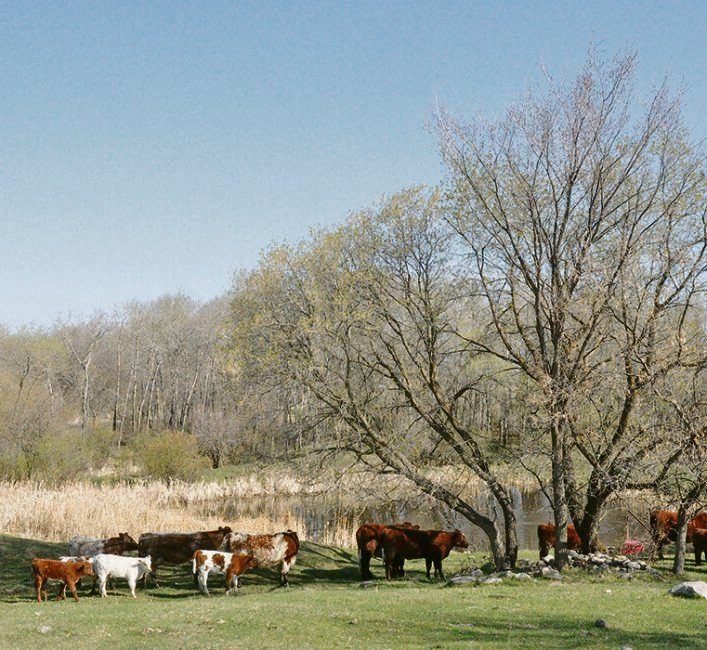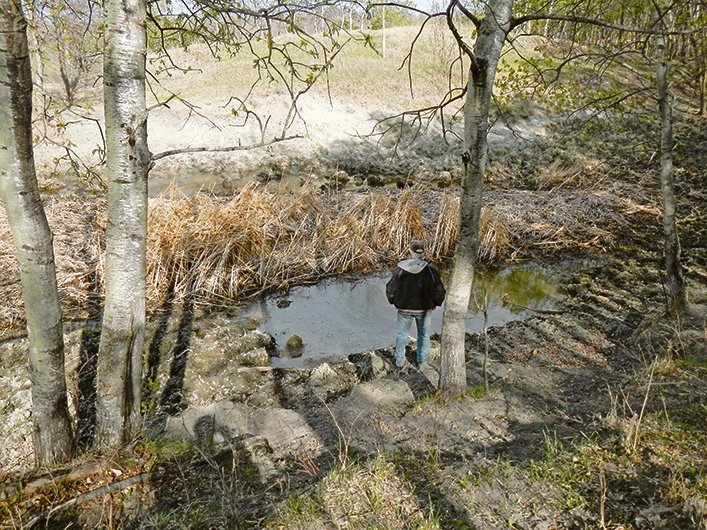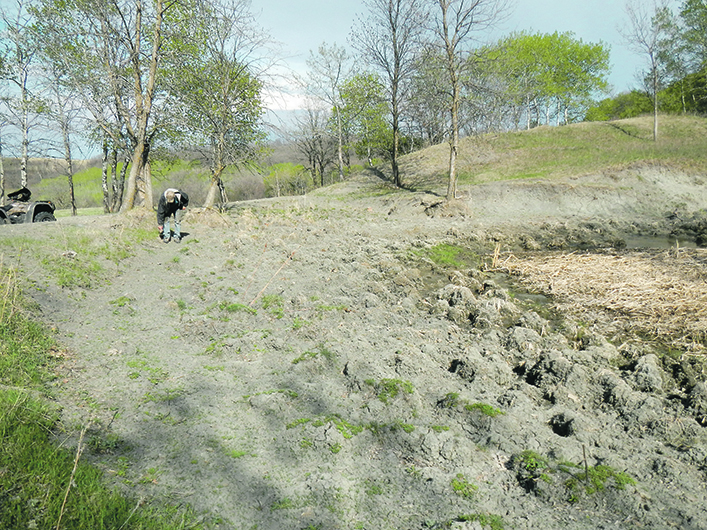Water supply perilous for many prairie ranches

Half-empty dugouts are a normal part of life for ranchers in Western Canada, but the water shortfall usually happens in the middle of summer, not in the second week of May.
On Melissa Atchison’s farm near Pipestone, Man., the dugouts are only 40 percent full this spring. Recently, Melissa and her husband, Trevor, hired a backhoe operator to clean out their dugouts.
“To see if we can get some more water in them. We’ve never done that before,” said Atchison, vice-president of the Manitoba Beef Producers. “Our dugouts are groundwater fed. And they’re still low. So that’s not painting a very good picture.”
The Atchisons need a substantial amount of water because they run a herd of 800 Limousin-Angus cows and background calves at their feedlot. They also grow annual crops and produce hay on their farm.
The Atchisons and hundreds of ranchers in Manitoba, southern Saskatchewan and North Dakota are coping with low supplies and poor water quality this spring. A winter with minimal snowfall and below normal precipitation for at least 10 months are the main reasons for the water shortfall.
“The ground was covered (with snow) maybe twice this winter. But nothing significant,” Melissa said, describing the situation in western Manitoba.
In North Dakota, Manitoba and in parts of Saskatchewan, dugouts and water supplies are dangerously low. A number of cattle in North Dakota have died this spring due to water with toxic levels of sulfates.
“We’re seeing a lot of water quality issues (like high amounts of total dissolved solids),” said Miranda Meehan, a livestock specialist with North Dakota State University extension. “Some people are hauling water…. Or putting them in a different pasture (with water). There are some extreme case where nearly all the water on the ranch is unusable.”

In Saskatchewan, many producers are worried about the water in their dugouts and the health of their cattle.
“Even if you have water in your dugout right now, the quality is looking really poor,” said Trevor Hadwen, agroclimate specialist with Agriculture Canada in Regina.
“I know the number of (water) tests going to the provincial lab in Saskatchewan has increased 10-fold from normal years.”
The spring drought is a real threat to grain producers on the eastern Prairies, who are seeding a crop into dust. But timely rains could save the growing season for crops like canola and wheat. Rains in June and July will not re-fill dugouts this summer because snowmelt is essential for recharging water supplies.
“With cattle producers, they’re dealing with (dugouts) that aren’t going to fix themselves,” he said.
“Some of them have some seepage from groundwater, but that’s the rarity. If they (dugouts) are not being fed this time of year, we’re in big trouble because it means our groundwater isn’t there…. We are going to be hauling water, all year.”
Shawn Cabak, Manitoba Agriculture livestock specialist, said some Manitoba producers were hauling water in the second week of May.
Earlier in May, the Manitoba Beef Producers sent a letter to the provincial government asking for help with the water shortage.
It asked if pumps and water lines could be made available for livestock producers with water supply issues.

As well, it wants the province to make wildlife management areas available for grazing and provide funding through a program called Managing Livestock Access to Riparian Areas so farmers can improve existing water sources or “dig new ones.”
Atchison remains hopeful that cleaning out their dugouts with a backhoe will improve water supplies on their ranch. That isn’t going to fix poor pasture growth this spring, but the Atchisons do have other feed options if needed.
“The one silver lining is we had quite a mild winter,” she said. “So, we didn’t dip into our winter feed stocks as much as (normal).”
Some producers in North Dakota aren’t as hopeful.
They are already selling off herds to reduce pressure on their water and forage supplies.
Source: producer.com

